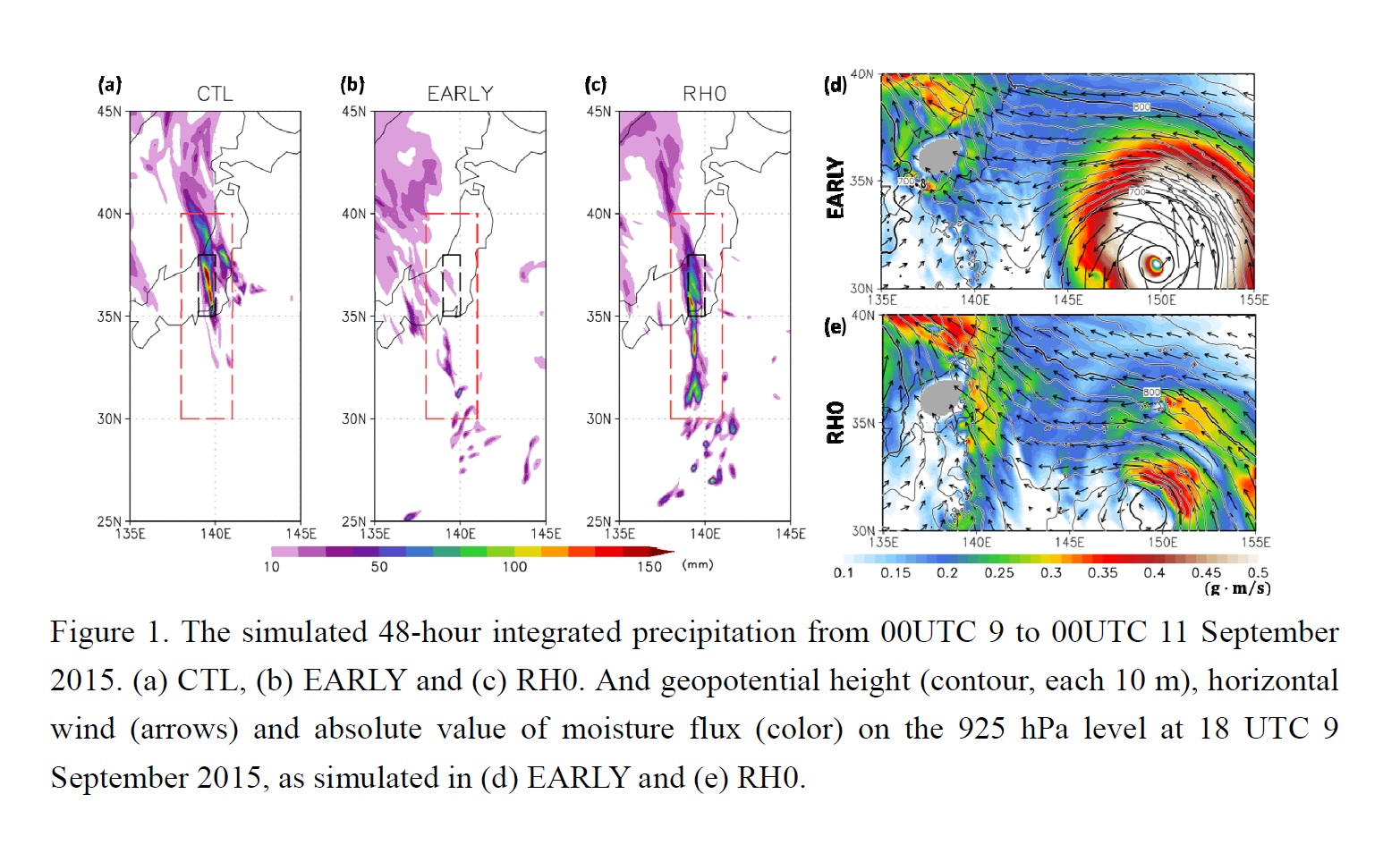Graphical Abstract
Nakamura, Y., T. Miyakawa, and M. Satoh, 2020: The role of Typhoon Kilo (T1517) in the Kanto-Tohoku heavy rainfall event in Japan in September 2015. J. Meteor. Soc. Japan, 98, 915-926. https://doi.org/10.2151/jmsj.2020-046 Graphical Abstract with highlights
Plain Language Summary: The Kanto-Tohoku heavy rainfall event in September 2015 is characterized by two typhoons, Etau (T1518) and Kilo (T1517). This study investigates the role of typhoon Kilo on the heavy rainfall. We carried out 3 numerical experiments: the control experiment (CTL), the early initialized experiment (EARLY) and the moisture-removed experiment (RH0). We found that southeasterly wind effectively supplied moisture to the Kanto region. The high-pressure ridge is an important factor for northwestward moisture supply, and stronger simulated Kilo disturbs the ridge, resulting in decreased precipitation.
Highlights:
- The early initialized experiment (EARLY) did not simulate sufficient amount of rainfall despite strongly simulated Kilo. On the other hand, the moisture-removed experiment (RH0) simulated heavy rainfall. Precipitation in RH0 is as active as in the control experiment, although typhoon Kilo is weaker simulated.
- In this event, moist air was brought to the Kanto region via a high-pressure ridge, by southeasterly wind. Stronger simulated Kilo disturbs the ridge, resulting in decreased precipitation.
- This high-pressure ridge is sensitive to the profile of Kilo, such as track and intensity. Accurate forecasting of typhoon track and intensity is important for the prediction of relatively remote heavy rainfall events.







